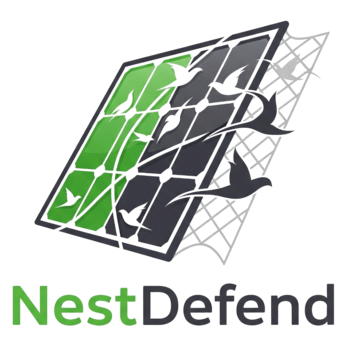Solar panels are a fantastic investment, harnessing clean energy and reducing your electricity bills. However, a common nuisance can threaten their efficiency and lifespan: pigeons and other birds. These feathered residents often find the space beneath your solar panels to be an ideal nesting spot, leading to a host of problems including droppings, noise, and potential damage.
Fortunately, protecting your solar panels from avian invaders is straightforward with a few proactive measures.
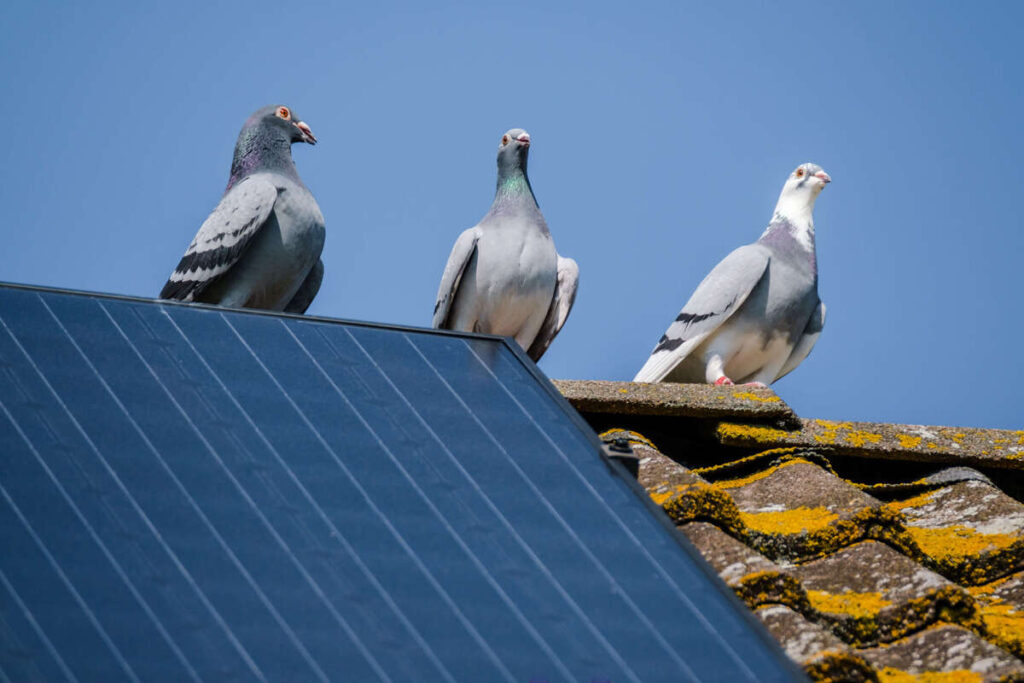
Why Birds Are a Problem for Solar Panels
Before diving into bird proofing solutions, it’s helpful to understand why birds are such a concern:
- Droppings: Bird droppings on the surface of your panels can significantly reduce their efficiency by blocking sunlight. Over time, these acidic droppings can also cause etching and damage to the panel’s surface.
- Nesting Material: Birds build nests using twigs, leaves, and other debris. This material can accumulate under your panels, posing a fire risk if it comes into contact with electrical components.
- Noise and Mess: Constant cooing, chirping, and the general mess associated with bird activity can be unpleasant for homeowners.
- Damage to Wiring: In some cases, birds might peck at or dislodge wiring beneath the panels, leading to costly repairs.
- Corrosion: The accumulation of droppings and nesting material can trap moisture, leading to corrosion of the panel frames and mounting hardware.
Effective Strategies for Bird Protection
Here are the most effective ways to deter pigeons and birds from taking up residence under your solar panels:
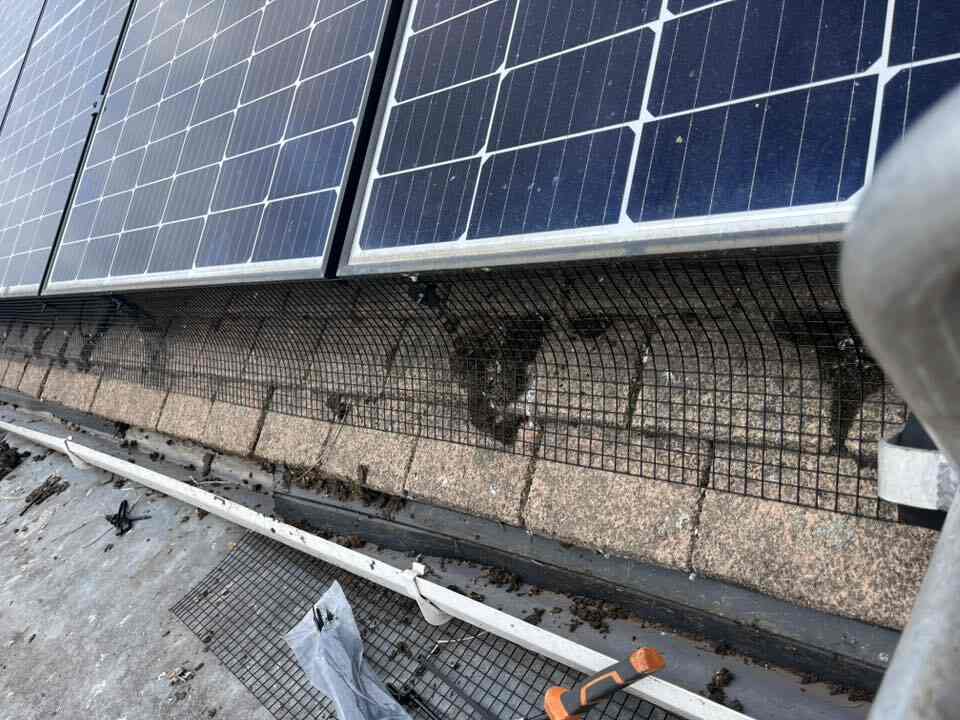
1. Install Solar Panel Bird Mesh (The Most Effective Solution)
Without a doubt, installing specialized solar panel bird proofing mesh around the perimeter of your solar panels is the most effective and long-lasting solution. This durable, UV-stabilized wire mesh creates a physical barrier that prevents birds from accessing the underside of your panels.
- How it Works: The mesh is typically attached to the solar panel frame using specialized clips that do not void your panel warranty. It forms a skirt around the entire array, blocking all entry points.
- Advantages: Highly effective, long-lasting, humane (does not harm birds), and relatively low maintenance once installed.
- Considerations: Professional installation is often recommended to ensure proper fitting and secure attachment, preventing gaps that birds could exploit.
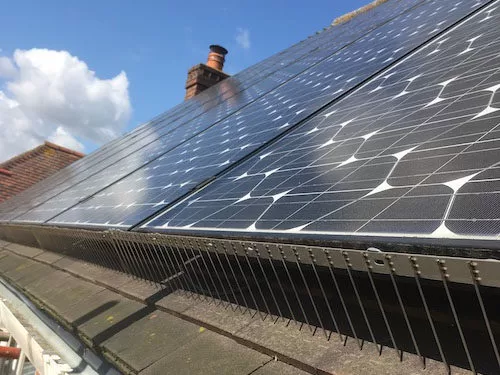
2. Bird Spikes
Bird spikes are a common deterrent used on ledges and surfaces where birds might perch. While less ideal for the underside of panels, they can be effective on the edges of the panel frames or nearby structural elements where birds might land before attempting to get underneath.
- How it Works: These blunt, stainless steel or plastic spikes make it uncomfortable for birds to land, forcing them to find another perch.
- Advantages: Easy to install, relatively inexpensive, and humane.
- Considerations: May not be aesthetically pleasing on the panels themselves and are not effective at preventing access to the underside of the panels.
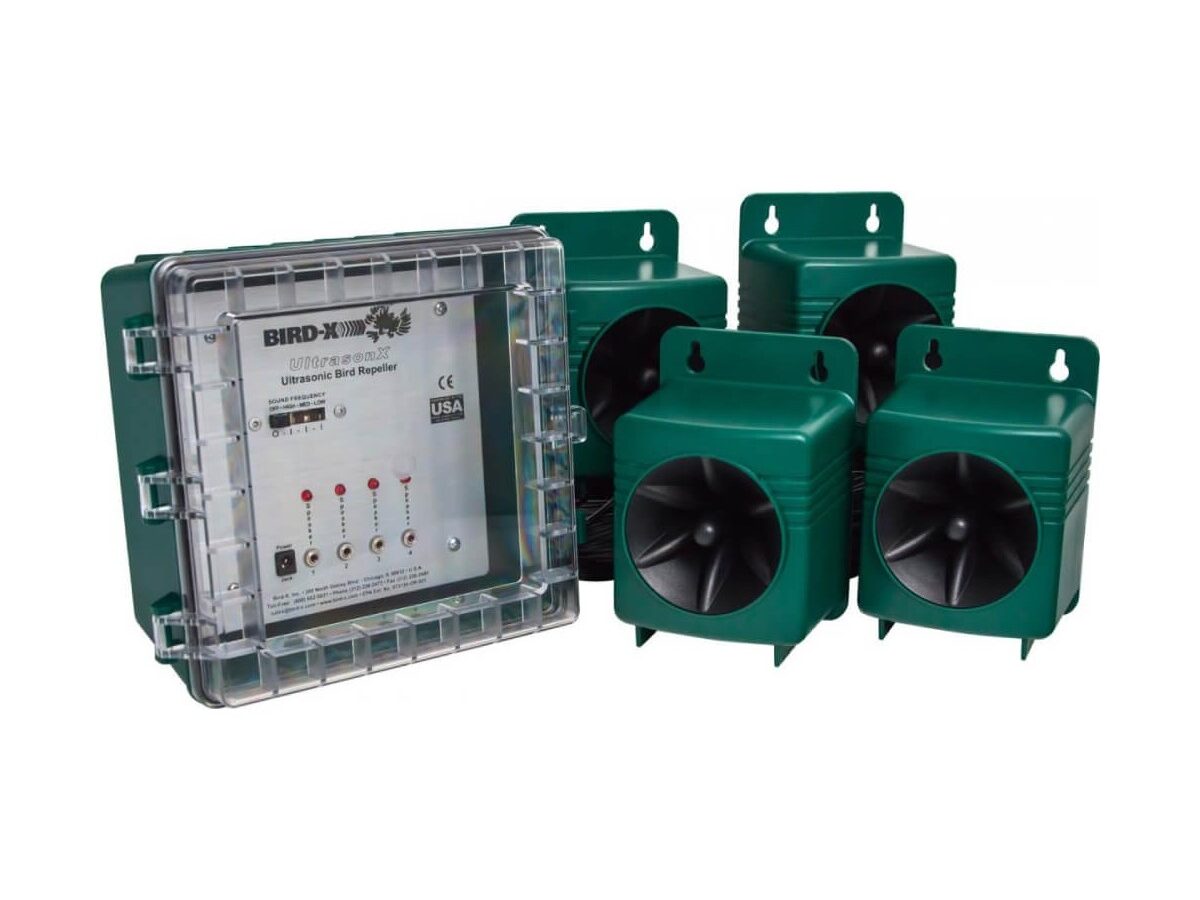
3. Ultrasonic Bird Repellents
These devices emit high-frequency sound waves that are designed to be irritating to birds but generally inaudible to humans.
- How it Works: The idea is to create an unpleasant sonic environment that encourages birds to leave the area.
- Advantages: Non-invasive, no physical barrier required.
- Considerations: Effectiveness can vary. Obstacles can block the sound waves, and birds can sometimes habituate to the sound over time. They are generally less reliable than physical barriers.
4. Reflective/Shiny Objects and Predator Decoys
Visual deterrents can sometimes work, especially for a short period or for less persistent birds.
- Reflective Objects: Hanging old CDs, reflective tape, or Mylar balloons near your solar panels can disorient and deter birds with their flashing lights.
- Predator Decoys: Placing a fake owl or hawk near your panels might scare off some birds.
- Advantages: Inexpensive and easy to deploy.
- Considerations: Birds are intelligent and can quickly learn that these are not real threats, rendering them ineffective over time. They require frequent relocation to maintain any deterrent effect.
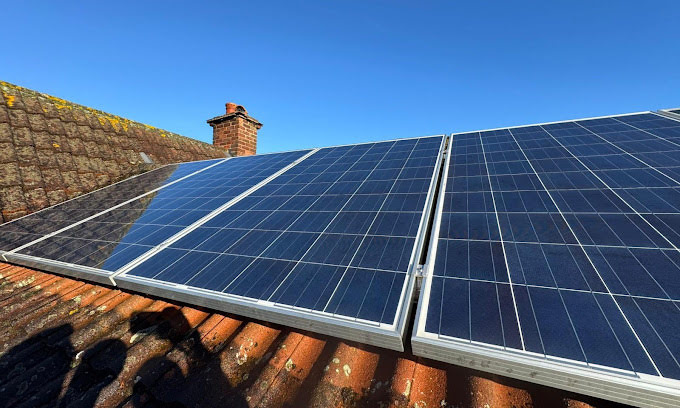
5. Regular Cleaning and Maintenance
Keeping your solar panels clean of droppings and debris can help in two ways:
- Reduces Attractiveness: A clean environment is less appealing for nesting.
- Early Detection: Regular inspections allow you to spot any signs of bird activity early, so you can address the problem before it escalates.
6. Professional Bird Control Services
If you’re facing a significant bird problem or prefer a hands-off approach, consider hiring a professional bird control service.
- What They Do: These experts can assess your situation, recommend the most effective solutions (often including mesh installation), and ensure the job is done correctly and safely. They also have access to a wider range of commercial-grade deterrents.
- Advantages: Expertise, efficient installation, and often offer warranties on their work.
- Considerations: Can be a more expensive option upfront.
Conclusion
Protecting your solar panels from pigeons and other birds is a crucial step in maintaining their efficiency and extending their lifespan. While various deterrents exist, investing in high-quality solar panel bird mesh is by far the most effective and reliable long-term solution. By taking these proactive measures, you can ensure your solar panels continue to harness the sun’s energy cleanly and efficiently for years to come, free from unwanted feathered tenants.
